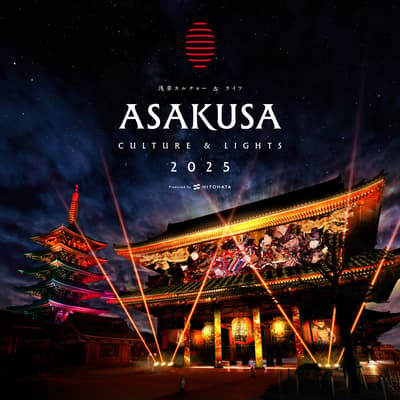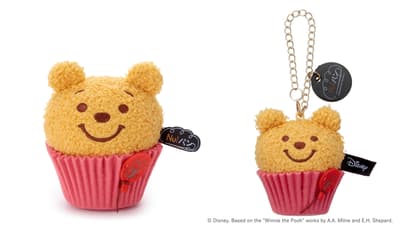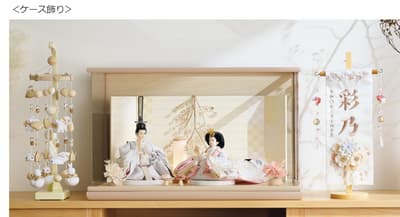Sensoji Temple is the symbol of Asakusa, where you can enjoy traditional Japanese streetscapes and cuisine. The Kaminarimon Gate at its entrance is an absolute must-see spot when visiting Asakusa. Along the path to the main hall, you'll find numerous shops selling specialty foods unique to Asakusa. Discover the attractions of Sensoji Temple, which offers not only worship but also food tours and countless other highlights.
What is Sensoji Temple?

Sensoji Temple is Japan's oldest temple located in Taito Ward, Tokyo. Founded in 628 CE, it boasts over 1,300 years of history. Known as Asakusa's representative tourist attraction, it welcomes an astounding 30 million visitors annually. Major annual events such as New Year's visits and Setsubun are held on a grand scale, making it one of Tokyo's most representative temples.

Its history dates back to the Asuka period. In March 628 CE, two brothers fishing in the Miyato River (present-day Sumida River) caught a Buddhist statue in their nets. The local leader, Hajino-no-Nakatomo, worshipped this statue and became a monk, marking the beginning of Sensoji Temple.
Later, during the Edo period, the temple flourished as a prayer site for Minamoto no Yoritomo, Ashikaga Takauji, and the Tokugawa shogunate, continuing to this day. Currently, the principal image is enshrined as a secret Buddha in the inner sanctuary, invisible not only to the general public but even to the head priest. This is because Kannon appeared in a dream to Priest Shokai, who rebuilt the Kannon Hall, and declared, "Do not worship carelessly."

Sensoji Temple is also famous for attracting many visitors during New Year's. The number of worshippers during the first three days reaches approximately 2.8 million. Many food stalls are set up throughout the temple grounds, creating a festive atmosphere.
The surrounding area features iconic Japanese tourist spots like Tokyo Skytree, along with the fun food-filled Nakamise-dori street and historic traditional cuisine, making it an enjoyable destination for everyone from children to seniors.
Enhance Your Blessings through Worship

The primary purpose of visiting Sensoji Temple is worship. The temple's blessing is "Shogan Joju" - fulfilling all heartfelt wishes. Upon arriving at Sensoji Temple, be sure to purify your hands and mouth at the temizuya (water purification basin) before worship.
The expansive Sensoji Temple grounds contain many worship spots besides the main hall. Particularly noteworthy is Kume Heinai-do Hall, famous as a hidden love power spot. While Kume Heinai himself wasn't particularly related to matchmaking, the hall became a romantic destination through a small Edo period wordplay.
At Kume Heinai-do Hall, it's said that submitting a love letter will make that romance come true. Why not give it a try?
Savoring Asakusa Cuisine at Nakamise

From Sensoji Temple's symbol, the Kaminarimon Gate, souvenir and food shops line approximately 250 meters to the main hall. This is called "Nakamise" and serves as Sensoji Temple's main approach. Nakamise originated in 1685 when, as the number of worshippers increased, nearby residents were given permission to open shops under their eaves in exchange for cleaning duties.
This Nakamise is packed with affordable, exquisite cuisine that can only be found in Asakusa! Since many shops sell the two Asakusa specialties I'll introduce, find your own favorites.
Fresh, Hot Ningyo-yaki (Doll-shaped Cakes)

At Nakamise, you can eat freshly made, piping hot ningyo-yaki! While you often see them sold as souvenirs at confectionery shops, fresh hot ones offer a completely different taste experience.
You can choose between "with bean paste" or "without bean paste," referring to whether sweet red bean filling is included. Even without filling, they have a fluffy, elegant sweetness that's delicious. Those who dislike sweet red beans should definitely try them.
Age-manju (Fried Sweet Buns)

Age-manju are, as the name suggests, sweet buns fried tempura-style in oil. The most famous shop for fried sweet buns is "Jukyu," located at the end of Nakamise-dori, close to the temple.
The flavors are incredibly diverse: sweet red bean, matcha, curry, pumpkin, custard cream, cherry blossom, chocolate, sweet potato, monjayaki, and more! *Flavor varieties may change by season and time. Seasonal limited flavors are also available, making you want to visit repeatedly. All cost 100-200 yen each, so you can enjoy them casually.
Experience the Seasons through Annual Events like "New Year's" and "Setsubun"

Sensoji Temple hosts various events throughout the year - over 40 annually! Since some event occurs every month, visiting to enjoy these occasions is also wonderful. Here are the most recommended annual events that attract large crowds.
New Year's Visits

Sensoji Temple is particularly popular among Tokyo's New Year's visit spots, bustling with crowds during the first three days each year. The combined visitor count for all three days reaches 2.8 million, making it Tokyo's second-most visited site after Meiji Shrine. During this period, numerous food stalls open beyond Nakamise, creating a festival atmosphere. Be sure to taste the festival cuisine!
From January 1st to 7th, the annual "New Year Grand Prayer Meeting" takes place. During this period, "New Year Special Prayers" are held every 30 minutes or hour before the main hall's sacred altar, with special "Good Fortune Protection Charms" and "Aizen Sacred Bows" available only during this time.
Setsubun (Bean-Throwing Festival)

February 3rd's Setsubun also features a major event called "Setsubun-e" at Sensoji Temple. Setsubun involves throwing beans at demons and eating one more bean than your age for good health throughout the year. Sensoji Temple was actually the first to hold this ceremony on a grand scale in Edo.
On the day, a special stage hosts bean-throwing by 100 entertainers and cultural figures connected to Asakusa! Additionally, there's the "Fukuju-no-mai (Seven Lucky Gods Dance)" performed by men born in the zodiac year, and distribution of fortune beans.
Unique Shopping for Souvenirs Available Only Here

At Sensoji Temple's Nakamise, you can buy souvenirs unique to Asakusa. Many shops sell traditional Japanese souvenirs and miscellaneous goods, making them popular with international tourists.
Kaminari-okoshi (Thunder Rice Crackers)
One popular Asakusa souvenir is "Kaminari-okoshi." These began being sold in Asakusa during the late Edo period. They're made from hoshiii (steamed and dried rice) mixed with mizuame (starch syrup) and peanuts, then hardened.
With simple seasoning, "Kaminari-okoshi" is beloved across generations from children to adults. Recently, various types have been released, including fruit-flavored and Western-style versions.
Besides kaminari-okoshi, souvenir versions of popular street foods like "age-manju" and "ningyo-yaki" are also sold, so definitely try them.
Traditional Japanese Miscellaneous Goods
Walking through Nakamise, you'll notice shops selling festival happi coats, swords, geta sandals, and other items reminiscent of the Edo period. These "wa" (traditional Japanese) themed shops have souvenirs that make you want to pick them up!
While large items like happi coats might be difficult to purchase, many affordable options like keychains, straps, and stickers are available. If regular food souvenirs seem too ordinary, definitely buy some for friends. They're also great as personal souvenirs!
Also Visit Asakusa Shrine, Connected to Sensoji Temple
Did you know there's a shrine called "Asakusa Shrine" right near Sensoji Temple? This shrine actually enshrines the fisherman brothers who found the Buddhist statue that led to Sensoji Temple's founding, along with "Hajino-no-Nakatomo," who recognized the statue as Kannon Bodhisattva.
Asakusa Shrine enshrines three deities, earning it the nickname "Sanja-sama" (Three Shrine Deities), with its festival called "Sanja Matsuri." During the May Sanja Festival, about 100 portable shrines from Asakusa neighborhoods gather to parade through the town. The entire Asakusa district becomes festival-colored during this period, with various dances performed at the shrine grounds and kagura stage.
Asakusa Shrine offers the blessing of "Shingan Joju" - fulfilling heartfelt wishes. Therefore, it grants various wishes including family happiness, traffic accident prevention, business success, and exam success. They also sell unique charms like "Daijoubu Mamori" (Everything's Fine Charm) and "Card Mamori" (Card Charm), so choose according to your wishes.
Test Your Luck with the Famous "Unlucky Fortune" Omikuji
At Sensoji Temple, you can draw the standard temple omikuji fortune slips for 100 yen each. However, did you know these omikuji are famous for producing many "unlucky" fortunes?
Sensoji Temple's omikuji consist of seven types: "unlucky, lucky, moderately lucky, half lucky, small lucky, least lucky, great luck." Among these, unlucky fortunes comprise 30% - an extremely high probability! Conversely, drawing great luck means you're incredibly fortunate! When visiting Sensoji Temple, definitely try your luck.
Sensoji Temple's Exclusive "Goshuin" and "Goshuin Books"
Sensoji Temple offers two types of goshuin: "Daikokuten" and "Sho-Kanzeon Bodhisattva," each with different meanings. Both are popular goshuin, so if interested, why not receive both? Sensoji Temple also sells goshuin books in three types and six colors - quite a diverse selection.
Wide Variety of "Omamori" Charms
Sensoji Temple sells over 30 types of charms with rich variations in color and shape. This diversity can be said to be unique to Sensoji Temple, catering to the needs of tourists from around the world. There are stylish and cute design charms perfect not only for personal use but also as gifts.
Recommended Surrounding Spots
Popular spots recommended for tourism alongside Sensoji Temple include Hanayashiki amusement park within walking distance, Asakusa Engei Hall (5 minutes on foot) where you can enjoy various entertainment arts, and Tokyo Skytree (1 minute from Tokyo Skytree Station).
Hanayashiki
Hanayashiki is 3 minutes on foot from Asakusa Station and within walking distance of Sensoji Temple.
The nostalgic amusement park "Hanayashiki" features 27 attractions. The traditional "Roller Coaster" has a top speed of 42km/h. While this might not seem very fast for an old ride, when you actually ride it, racing at top speed just barely clearing buildings provides thrills you can't experience elsewhere.
Other popular attractions include the plummeting "Space Shot" and the "Haunted House." There are also children's rides like "Chibikko Taxi" and "Sky Ship," making it enjoyable for all ages.
Born as a peony and chrysanthemum flower garden in the late Edo period, "Hanayashiki" began adding amusement facilities from 1872, becoming so popular that Emperor Taisho visited incognito. After World War II reconstruction alongside Tokyo's recovery, it continues operating as Japan's oldest amusement park. A retro atmosphere permeates throughout, from attractions to everywhere else, with affordable prices adding to its appeal.
Asakusa Engei Hall
Asakusa Engei Hall is 1 minute on foot from Tsukuba Express Asakusa Station and about 5 minutes from Sensoji Temple.
Asakusa Engei Hall is a theater where Japan's classical narrative art "rakugo" is performed. It's considered one of Tokyo's rakugo regular venues alongside Suzumoto Engei-jo, Shinjuku Suehiro-tei, and Ikebukuro Engei-jo. It's also famous as the birthplace of Hagimoto Kinichi and Beat Takeshi.
Besides rakugo with its distinctive intonation and wordplay, various forms of laughter including manzai, comic monologues, acrobatics, magic, impersonations, and comedy are performed 365 days a year. "Rakugo Kyokai" and "Rakugo Geijutsu Kyokai" alternately hold performances every 10 days.
Tokyo Skytree
Tokyo Skytree is 1 minute on foot from Oshiage Station and Tokyo Skytree Station, about 25 minutes on foot from Sensoji Temple.
Opened in 2012, the towering Tokyo Skytree is the world's second-tallest tower at 634m. Recommended features include viewing Tokyo sunsets from the observation deck and enjoying original sweets available only at Skytree in the shopping center "Tokyo Solamachi."
The beautifully decorated elevator takes you to the observation deck, building excitement for the awaiting scenery. It reaches the 350m height in just 50 seconds. You can overlook 360-degree panoramic views extending to Mount Fuji. For those wanting to enjoy scenery from even higher up, head to the 450m observation corridor.
As the sun sets and city lights begin to twinkle, the atmosphere becomes even more romantic. While it might be too stimulating for those with acrophobia, try looking down at Tokyo's rarely seen streetscape.
Tokyo Skytree Town Solamachi also houses a planetarium, Sumida Aquarium, Postal Museum, plus over 300 shops and restaurants. Restaurants feature numerous Skytree-inspired menu items perfect for social media. It's ideal for dates too.
Access Information
From Sensoji Temple to Tokyo Skytree is approximately 1.4km in straight-line distance, about a 25-minute walk. During warm weather, walking along the river is recommended. You can also take the Toei Asakusa Line for just 2 stations by train.
Frequently Asked Questions
About New Year's Crowds
With 2.8 million visitors over three days, expect 1-2 hour wait times for New Year's visits. However, days other than January 1st tend to be relatively less crowded. The lines move continuously, so turnover is quick. Be sure to dress warmly!
About Parking
Sensoji Temple has no parking facilities. Please use paid options like Kaminarimon Underground Parking.
Basic Information
Address: 2-3-1 Asakusa, Taito Ward, Tokyo
Phone: 03-3842-0181
Hours: 6:00-17:00 (6:30-17:00 October-March)
Closed: Never
Access: 5 minutes on foot from Asakusa Station (all lines)
I also visit Sensoji Temple for New Year's every year, and half our group always draws unlucky fortunes! Whether aiming for great luck or going for the street food, Sensoji Temple never gets old no matter how many times you visit!


